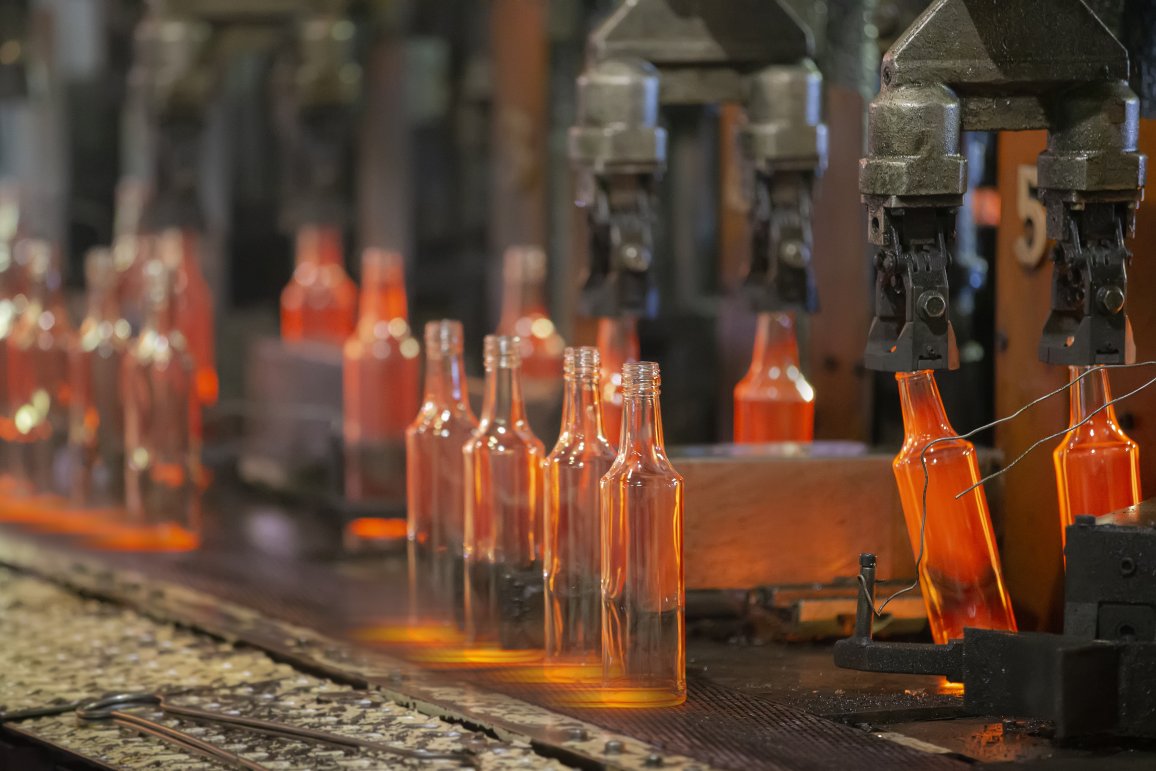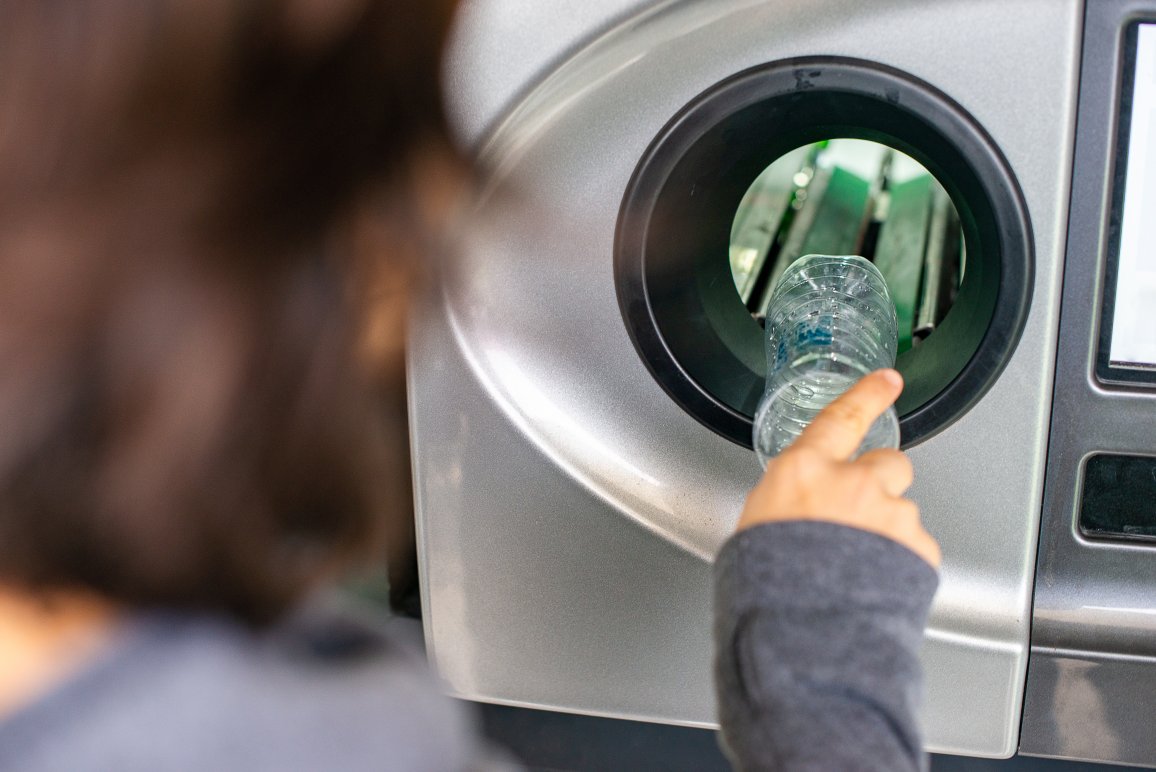Glass bottles: A heavy and expensive ecological burden
Producing glass requires a lot of energy and is therefore particularly affected by the high procurement prices. In 2022, the Federal Association of the German Glass Industry (BV Glas) spoke of a fivefold increase in costs. The beverage industry will pass on this price increase to consumers. A good alternative in more ways than one: PET bottles.

The temperatures involved in glass production are hotter than in a volcano. The raw materials – including sand, lime and soda – require temperatures of up to 1,600 degrees Celsius to melt. Even when 65 per cent of the mixture is broken glass, it is still 1,400 degrees Celsius. In order to maintain those temperatures, the glassworks have to heat continuously with gas or oil; their ovens cannot stand still for a moment – otherwise, they will break down. This has its price though, especially these days, as the increased energy costs are hitting hard, despite government price brakes.
According to the German Environment Agency (UBA), glass manufacturing is one of the most energy-intensive industries of all. The energy requirements are correspondingly high, as are the emissions of carbon dioxide, nitrogen oxide, sulphur dioxide and dust.
The Federal Ministry for Economic Affairs and Climate Action (BMWK) provided the following information about this in its 2020 ‘Industry Profile for the Glass Industry’: In 2015, the glass industry required 51.93 petajoules of energy for the melting process alone, equivalent to approximately 14,436 gigawatt hours. As a comparison, with an output of six megawatts, a conventional wind turbine produces about ten gigawatt hours per year and thus supplies electricity to around 3,500 households during this period. [1] If we wanted to meet the energy requirements of the glass industry in 2015, 1,443 wind turbines would be needed – equivalent to the annual electricity supply of more than five million households.
PET bottles – a climate-friendly alternative
At the same time, the glass industry emitted a total of 4.881 million tonnes of CO2 in 2015. [2] In view of this, glass production can never be sustainable, noted the Federal Environment Agency. But there are already alternatives that use less energy and that are more environmentally friendly, especially for container glass for beverage filling. At the forefront, PET plastic bottles.
Glass and PET bottles have some things in common. Both forms of packaging are made from raw materials that have to be mined or extracted – sand for glass, and crude oil for PET. However, the production of PET bottles only requires temperatures of around 265 degrees Celsius, more than 83% less heat than for glass production.

Disposable or reusable – what makes ecological sense?
Both materials are used to make disposable and reusable bottles, and they can also be recycled similarly well. In the opinion of the German Environment Agency, it makes no difference whether reusable bottles are made of glass or PET.[3] Refilling – up to 50 times for glass and about half of that for PET – offsets a lot in terms of raw material requirements and sustainability. According to the German Environment Agency, new production also consumes more energy and resources than the return transport and cleaning of reusable bottles.
But this view is contested. ‘A look at life cycle assessments reveals that transport logistics especially can become the Achilles heel of reusable bottles’, notes Dr Isabell Schmidt from the German Association for Plastics Packaging and Films (IK).
Another troublesome factor for the reusable system for glass bottles is single-provider bottles. These ‘special’ bottles are increasingly being used by beverage manufacturers for marketing purposes, but other bottlers cannot use them. The foreign bottles, which can account for up to 50 per cent, must be sorted out and returned to the original company. This leads to additional transport costs and ecological disadvantages.
Why logistics matter
In any case, transport is an important factor in the energy and emissions balance of packaging, especially glass. The distances between the manufacturers, bottlers and retailers have a big impact – the further the distance, the bigger the impact. The same goes for the weight of the bottles. Whereas a one-litre single-use PET bottle weighs just 25 grams, a one-litre glass bottle weighs around 550 grams, almost 22 times more. One tonne corresponds to 1,800 glass bottles and 35,000 PET bottles. The heavier the weight of the packaging, the more complex and energy-intensive the logistics.
The extent of this can be seen in particular when transporting returnable bottles from the retailer to the recycler. The association of beverage packaging of the future (BGVZ) calculates that 400,000 pressed PET bottles require one truckload to transport, while 400,000 glass bottles require 26 truckloads.
Increased raw material costs
According to the ‘Industry Outlook 2030+’ for the glass industry, published by the Stiftung Arbeit und Umwelt der IGBCE [4], glass manufacturers see opportunities and risks for their future. The burdens cited are the energy-intensive manufacturing process and a more difficult transition to technologies with lower greenhouse gas emissions. The industry also continues to be concerned about high energy costs and stricter environmental regulations. Current figures already confirm these fears; the price of glass bottles has risen particularly dramatically, as reported by the Federal Statistical Office of Germany: at the beginning of 2023, producer prices for bottles made of uncoloured glass rose by 40.2 per cent compared to January 2022, while bottles made of coloured glass recorded an increase of 37 per cent. [5] This is, once again, due to the expensive energy – plus increased costs for the raw materials needed for glass production: 58.5 per cent more for soda, 30.4 per cent for quartz sand, and 27.3 per cent for ground limestone.[6] Furthermore, the glass industry expects strong competition from alternative packaging materials – such as the PET bottle.
(Author: Claudia Wörner, yes or no.)
[1] Chip.de
[2] BMWK, „Branchensteckbrief der Glasindustrie“ von 2020
[4] Industriegewerkschaft Bergbau, Chemie, Energie
[5] spiegel.de, 16.03.2023
[6] spiegel.de, 16.03.2023
Do you like our texts? Perhaps even so much that you want to use them in your own media? Then please get in touch with us beforehand!
